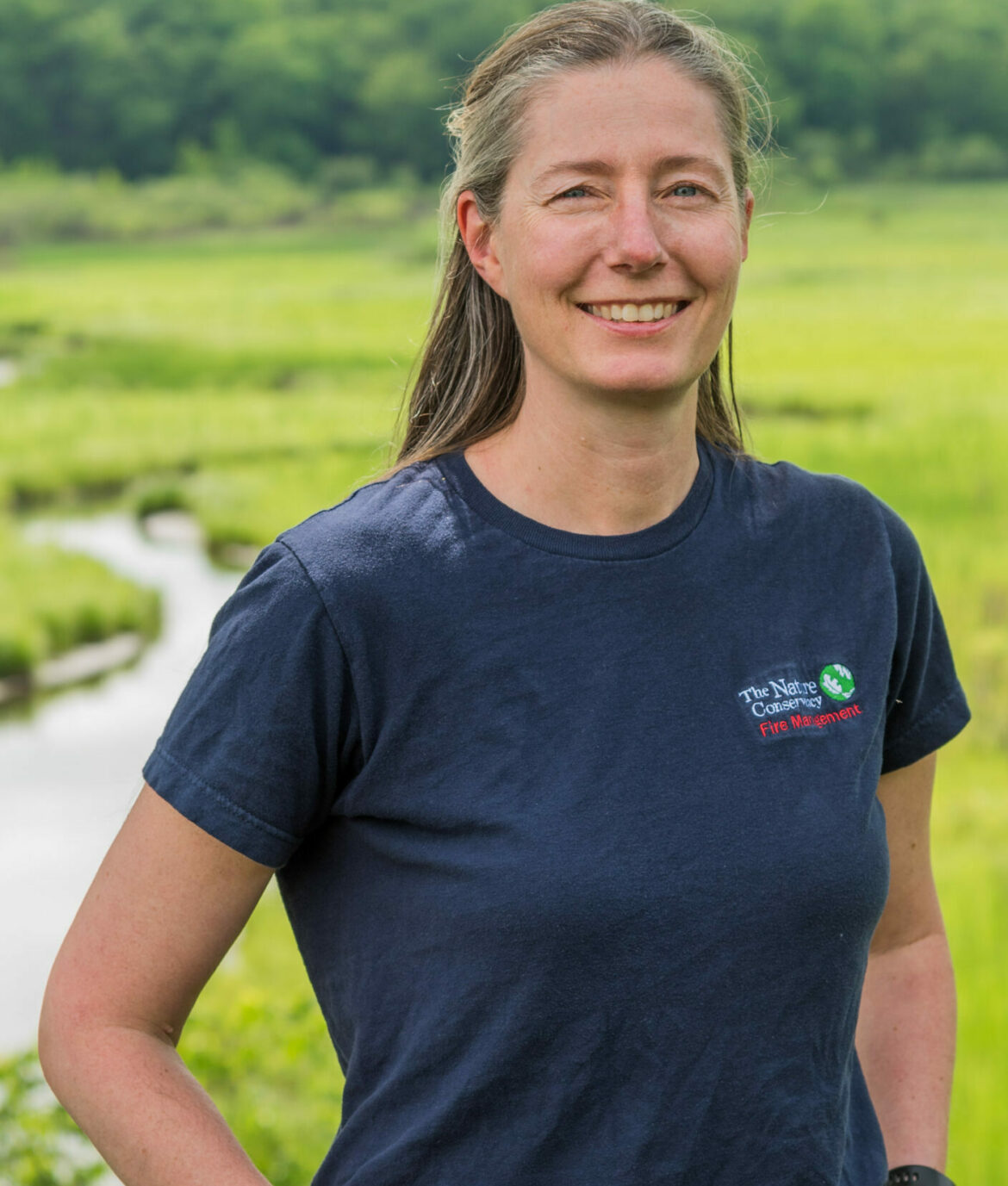As Director of Land Management at the Nature Conservancy in Madison, Hannah Spaul is responsible for the roughly 30,000 acres of land owned by the conservancy. The Nature Conservancy is a large, global nonprofit environmental organization that has a number of sectors, including forestry, climate change, food security and more. Spaul has been with the organization for about 23 years now, and she has primarily worked in land management and restoration. She also works with a number of partners, as the Nature Conservancy is not an exclusively internal-facing organization. Rather it works in close collaboration with state, federal and county partners who have private landowners that have similar goals and alignment around conservation.
Spaul distills the global issue of environmental conservation down to its effects on the city of Madison and Dane County.
What do you think is the biggest challenge our community faces?
As a medium-sized, growing community, we are already experiencing and will continue to experience impacts around climate change, and the intersection of where that really comes into human health, whether it be well-being or more direct environmental impacts. Climate change, like many, many communities across the country and globe, is going to be at the forefront of what some of our greatest challenges are.
The county at large has some really nice protected undeveloped areas. Compared to a lot of counties in Wisconsin, I think Dane County is in a really healthy position and supports protected areas and protected lands. But from a land management, restoration standpoint, having those lands protected by Dane County Parks, the state, local municipalities, that land needs more than just being protected. That’s the first step: making sure we have lands that are undeveloped to provide ecosystem services or just for people to recreate. And then there’s the management of those properties. Scientifically, what needs to be done and having the capacity and resources to use and recreate. I think the greatest need is around ensuring that there can be more lands protected and then that those lands are supported to be adequately managed.
What do you wish people in our community understood better?
We are all contributing, whether it’s positively or negatively, to the environment, including the small actions that we each take individually every day and the hundreds of decisions that we make about what resource use and what we choose to do with our recreational time. I think the population of Dane County is around half a million people, so that’s half a million people making dozens of decisions every day, and it adds up. As a county, I would love for residents to know that they have a voice and power in the decisions that they make. This includes decisions about how they commute, their resource consumption, and whether they choose to advocate and support conservation efforts.
I would also like to really convey that not all residents have the same access to the same experiences. Just because one person has a certain experience does not necessarily mean that it’s the same experience that everybody in Dane County is having. There is a lot of disparity around different communities about what access they have to protected areas, natural areas, clean drinking water, shade and tree cover. I would send a message to all Dane County residents to remember that wherever they are, they should be aware that some do have access to less. And to those that live with access to less, they are entitled and welcome to be in those places to recreate and enjoy clean, pleasant places to live.
What is one change you would make if you could that would make life better for people in our community?
I do want to be a little careful in how I phrase it, because we all like to eat and farmers provide an integral, critical support role to our well-being. But, I think that significantly improving agricultural practices would bring the greatest direct benefits to all. Dane County has some amazing water resources, and there is significant nutrient-loading in those water bodies. Not to be crass with it, but those water pollutants come from runoff from agricultural farms. The management of how that happens results in excessively high nutrient loading directly into the water bodies that we enjoy recreating in, that we rely on for clean water, and that post the important biodiversity of our freshwater in Dane County.
I believe that modern and innovative farming practices can be done in a way that continues to meet the economic needs of our producers and sustain their livelihoods, but in a way that can significantly reduce the negative impacts that happen from what has become conventional farming. If I could wave the magic wand, it would be to work with the amazing producers that we have here to help make some small tweaks to timing and practices in how they do agriculture. That might not necessarily be huge changes; it just takes some open mindedness, a little bit of risk, and maybe some financial resources to help farmers make some of those transitions.
What in our community gives you hope?
Strong partnerships. There are so many active entities committed to conservation in Dane County. There is not one organization that is working in a bubble, trying to solve problems on their own, so I am given hope by the depth and scope and diversity of the groups that are committed to different aspects of conservation. I’m also really encouraged by the commitment from volunteers and engaged community citizens, and that has sustained over many years. I think there are more and more people who are interested in giving of their time and their expertise. To me that just represents that there is strong citizen support for doing good in the community, and it’s hard not to be inspired.
I believe that when people are working together, the sum of that effort is more powerful than everybody working independently.





